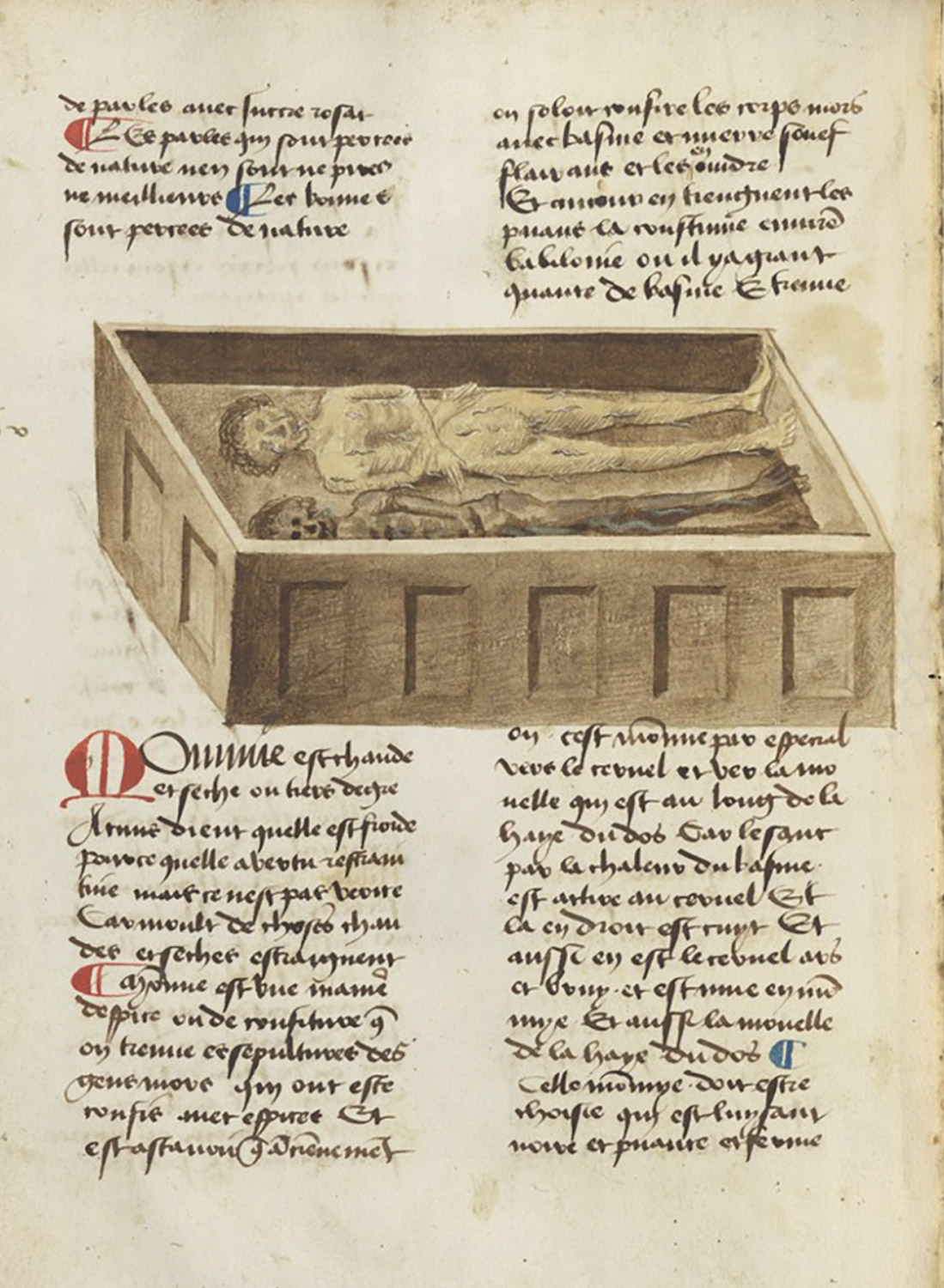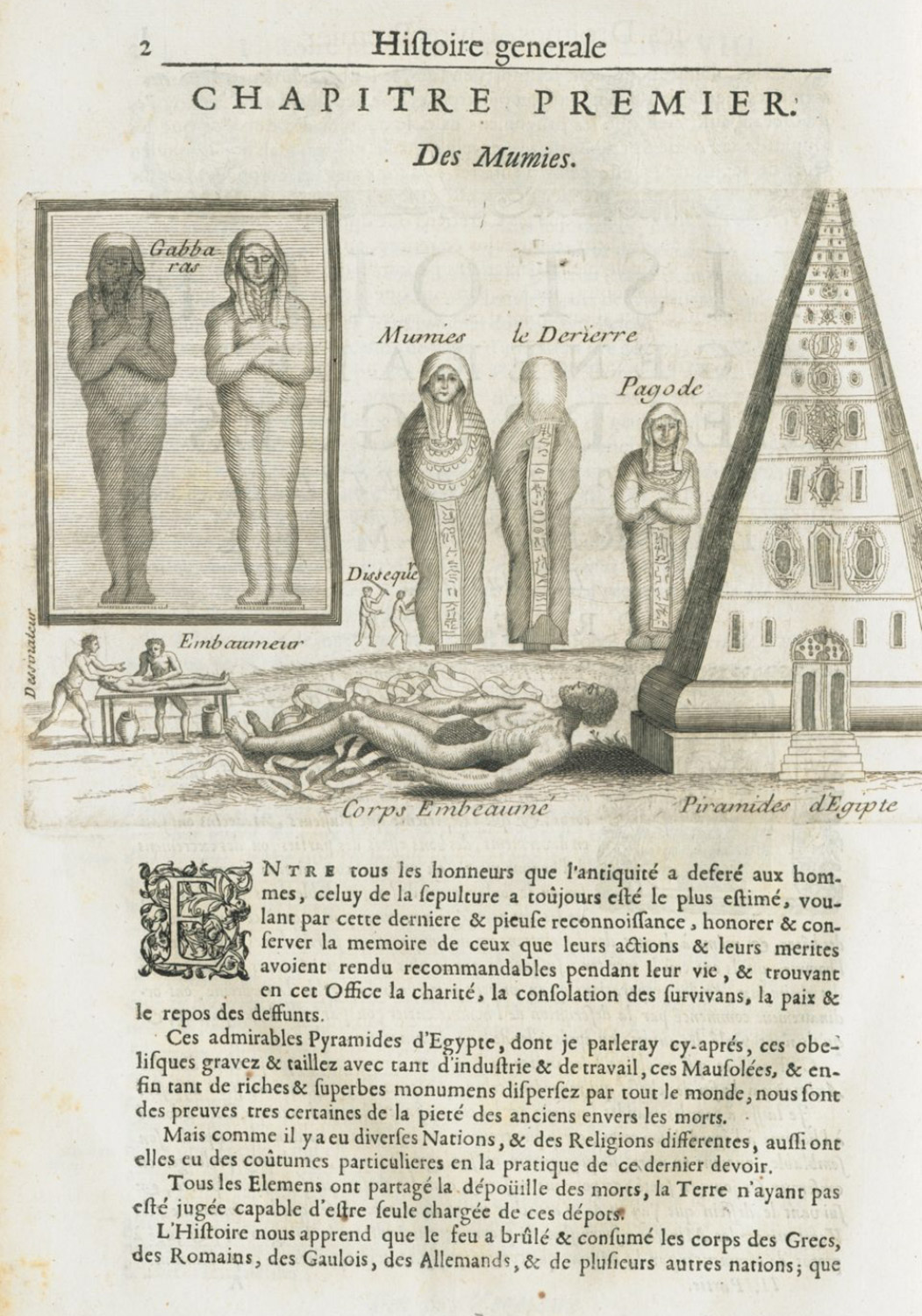
Figure 49a, 49b Quote 27 Recipe 18
“Mummian. Mummian find man nienan / dann in den Apotecken / daß ist menschen fleisch kunstlich ußgedorret unn bereittet. Gibt auch fyne harfarb und kleidungen. Ist gar nützlich zu vylen dingen. Temperiers an mit einem dünnen gummi arabico wasser.”[1]
The most sinister of all black-brown pigments is mummy, in use until the late nineteenth century,[2] but when did the application of mummy as a pigment actually start? In antique times, asphalt or bitumen was considered a particularly effective medicine which was called ‘mūm‘ (wax) in Persian. The discovery that Egyptian embalmed mummies contained the coveted asphalt raised the idea that its healing properties would be enhanced through contact with a human body.[3] Ultimately, the aspect of asphalt fell into oblivion and the idea of a healing effect was transferred to the entire embalmed body, which was given the medieval Arabic name mūmiya. From Arabic medicine, knowledge of the healing properties of Egyptian mummies spread to Europe in the eleventh century. Recommended by famous physicians like e.g., Guy de Chavillac (1300-1368), mummy was established in Europe as a cure for a variety of diseases. Since almost every materia medica manuscript or early print contains an image of mummies, it is probably one of the most depicted pharmaceuticals (Figure 49c). During the fifteenth century, their medical application extended, and at the beginning of the sixteenth century Paracelsus (1493/94 – 1541) confirmed the positive effect of mummies as a medicine. Probably before, but certainly in the middle of the sixteenth century, mummies or mummy parts could be purchased in pharmacies, as we learn from Boltz von Ruffach: The quality of mummy varied considerably since occasional bans on the export of Egyptian mummies led to an international increase in mummy forging, which also included the processing of European dead such as criminals or those who died as a result of illness. Mummy pigment is described as yielding a rather translucent dark brown color, and was probably available already in the fifteenth century to interested artists, earlier than commonly thought.[4] It has not yet been identified as a pigment in medieval illuminations.

[1] “Mummian is nowhere to be found but in pharmacies. It is human meat artificially parched and prepared. It also makes fine hair color and clothes. Useful for many things. Grind it with a thin gum arabic water.” In: Boltz von Ruffach. 1549. Illuminier Buoch: p. 97.
[2] For chemical characterization of nineteenth century mummy samples see: Languri 2004. Molecular Studies of Asphalt, Mummy and Kassel Earth Pigments, dissertation: chapter 3. https://dare.uva.nl/search?identifier=9576cd3b-89a2-456f-9cb2-42f4aa2ee8d1.
[3] Wiedemann, a German Egyptologist, provides an extensive overview of the use and adulteration of medical mummy through the centuries: Wiedemann. 1906. Mumie Als Heilmittel: p. 1–36. https://archive.org/details/zeitschriftdesv01elbegoog/page/n16/mode/2up.
[4] McCouat. 2013. The life and death of Mummy Brown. www.artinsociety.com

